All about derain
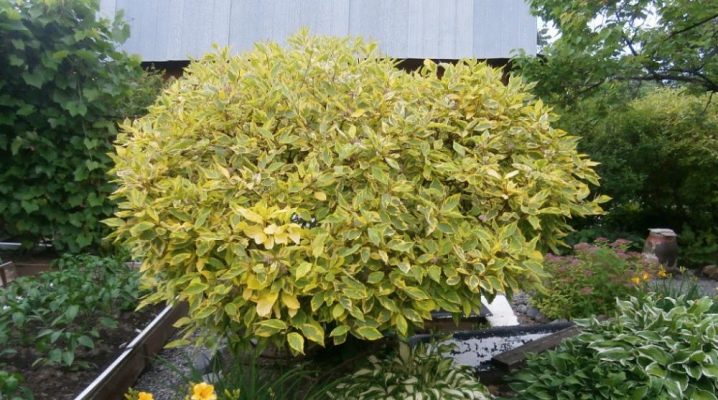
Derain is used both in gardening and in landscape design, as it has unique foliage colors. There are many varieties of the plant, but in order to breed at least one of the varieties, you will need to know the features of care and planting.
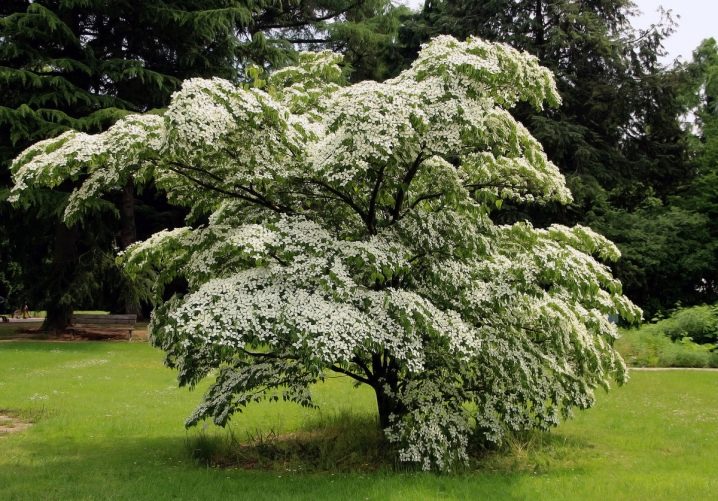
Description
Derain is a shrub of the dogwood family, which became famous thanks to such a scientist as Hippocrates. At one time, he studied the characteristics of the fruits of the plant and found out that they can be used to treat the stomach. Today, dogwood is better known as dogwood, for which both bark and roots, even flowers, are used in medicine. One small shrub can replace a pharmacy if you know how to brew different parts correctly and how much to consume. Religious people know derain as the tree from which the cross was made for Jesus Christ, where he was crucified.
The shrub is most common on the coast of Crimea, in the North Caucasus and Transcarpathia, but it can also be found in Africa, South America and other continents. In the wild, the plant tries to take root in the forest, where there is enough light, but can take up space in crevices and stones. This ornamental deciduous plant is classified as evergreen. Scientists note the species diversity that shrubs have, including perennial herbaceous forms and even tree species.

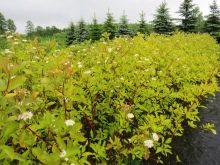
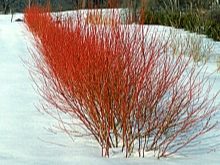
Shrubs and trees of this genus can reach a height of 3 to 8 meters. They are distinguished by a chic branched crown, on which many branches are formed over time, as a result of which the plant quickly turns into real thickets. While the plants are young, they grow slowly, the branches are arranged vertically. Only after a few years do the old branches acquire a horizontal position.
If we describe the root system, then it penetrates deep into the soil, very branched. But you can find varieties where it is superficial. These shrubs are best planted in an area with a lot of rainfall, otherwise they will need to be watered frequently. After the leaves fall off in the fall, the branches acquire an amazingly colorful color.
However, on some types of deren in winter, the leaves remain, but instead of the usual greenery, you can observe the variegation of red and yellow. In the spring in April, the dogwood begins to bloom, this process continues up to twenty days, but it will be possible to eat fruits only closer to autumn. The oblong berries are fleshy and have a tart, sour aftertaste. When ripe, the peel turns maroon.
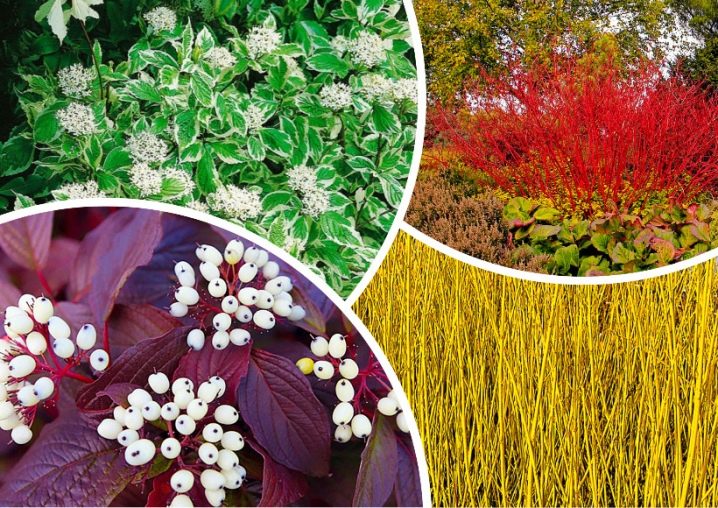
Varieties
There are several varieties of this plant that are often found in home gardens. White or Siberian dogwood has amazing winter hardiness. The flowering plant grows calmly in severe frosts. This feature has led to the fact that the shrub does not reach more than three meters in height. There are plants on the banks of rivers, if we talk about the natural environment. As an ornamental plant, it was appreciated for its very dense, foliage-shaped crown, which also spreads over 3 meters. The leaves of this variety are large and elliptical. From above it is painted dark green, from below it is white.
White turf blooms only 3 years after planting, small yellowish inflorescences are formed on the crown during this period, the diameter of which does not exceed 5 centimeters.From May to June, the derain spreads its amazing aroma around the area, thereby attracting insects for pollination. Blue and white berries ripen only at the end of August.
In winter, the shoots acquire a coral coloration, which is a feature of the plant. Such a dogwood is completely undemanding to the quality of the soil; it can grow quietly in the shade. You can plant it where the groundwater is close to the surface, moreover, the plant will additionally drain the area. This species has its own varieties, for example, “Shpeta” is highly valued for the golden border around the leaves. This is an amazingly beautiful ornamental plant, which, a few days before frost, acquires a violet-purple color, which only emphasizes the white clusters of berries.
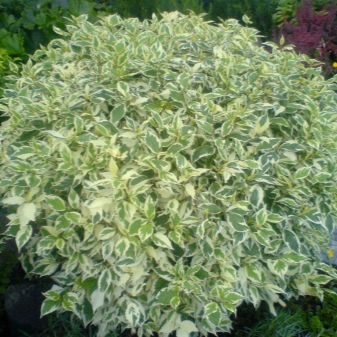
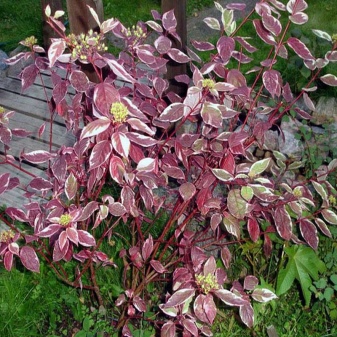
The "Gauhault" variety is also popular, on the leaves of which pink specks and the same golden border flaunt. Another winter-hardy variety "Cream Cracker" is rarely found in our country, although it also has a fantastic appearance.
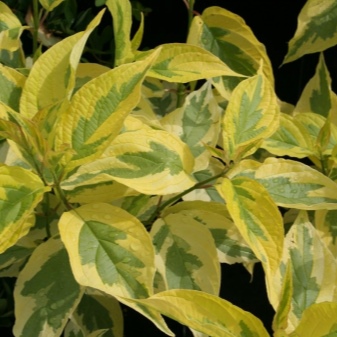
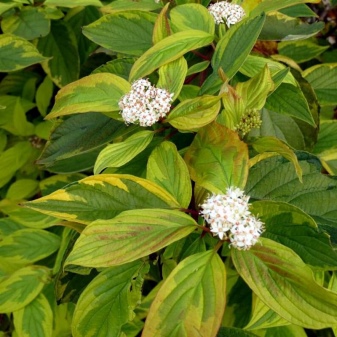
White-silver edge of the leaves of the "Variegat". There is a shrub very similar to it - "Elegantissima", which is popular all over the world because it has beautiful foliage, but remains completely picky. Not so often you can find, even in nurseries, "Ivory Halo", a variety with a white border. Its inflorescences are quite large and are distinguished by a milky color, in diameter they can reach 70 mm.
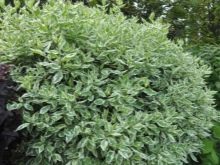
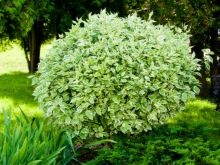
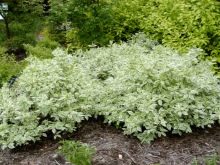
The offspring turf was brought to our country from North America, hence the peculiarity of its growth. This plant loves moisture and large thickets, so it can often be found in riverbeds and, in general, around water bodies. It has the same winter hardiness as the previous variety, and outwardly has a similarity to it.
The shrub does not reach a height of more than 3 meters. When the dogwood is young, its shoots are bright coral in color. A distinctive feature of this variety is fertility, since each bush produces a huge number of root shoots. From the outside, it may seem that it is simply falling apart, especially since even hanging branches, when in contact with the soil, easily root.
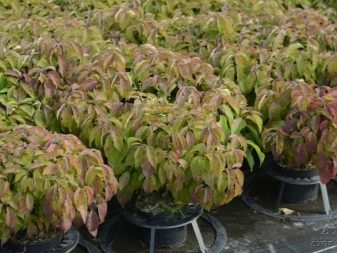
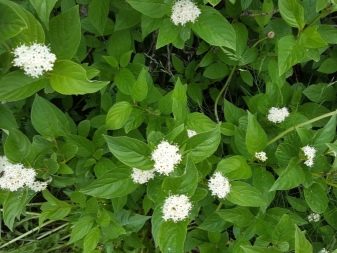
Annual flowering begins only four years after planting, the inflorescences reach 50 mm in diameter. You can observe the flowering process in May, but the bluish-white fruits will be ready only by autumn. Over time, this deren also developed various garden forms, for example, "Albomarginata", which has a white border on the foliage. It should be noted that the thin vine of this shrub is often used to create wickerwork.
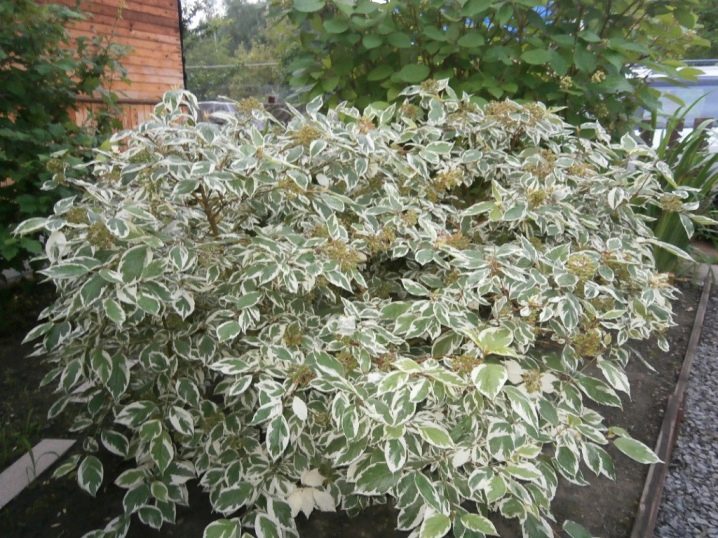
Gardeners also note the blood-red turf, which is famous all over the world for this unique color. You can meet it in the Caucasus and in other parts of the South-West region, however, the variety perfectly withstands severe frosts. In nature, it tries to put down roots on wet soil and forest edges.
The maximum height is 4 meters, the shoots at a young age have a greenish-brown color, but over the years it becomes darker. The foliage is also green, the maximum length is 10 cm. The peculiarity of the variety is the presence of curly hairs on both sides of the leaves. Variety "Compress" refers to ordinary turf, which is able to form compact bushes.
The plant begins to bloom very late, only after 7 years. Inflorescences appear at the end of May, in a few weeks the entire shrub becomes covered with umbrellas up to 100 mm wide. The flowers are milky white. In good weather, sometimes the turf begins to bloom again in August, after which blue berries appear, the size of which is the size of a pea.
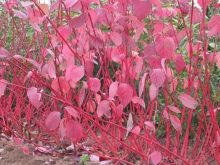
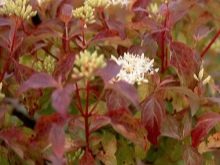

It should be noted that the shrub is quite rare, but at the same time it is completely picky about the soil. It can develop normally in an arid region, but it is not at all necessary that it be a place where the sun constantly shines. In winter, the turf does not freeze, after pruning it does not get sick.Among the garden forms, "Atrosangvinia" is especially distinguished, in which the shoots acquire a dark red color. "Viridissima" is popular, a distinctive feature of this variety is green berries. The yellow-leaved "Mitch" has pale yellow shoots with dots.
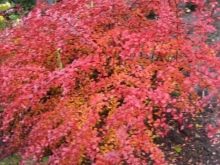
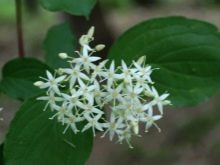
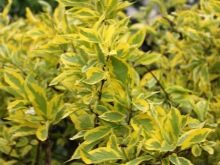
The Chinese "Kouza" has a unique appearance with a high crown. This small tree with inflorescences 10 centimeters in diameter is very fond of shade. There is a Canadian variety, very low, practically spreads along the ground and has red fruits, which seem to be located in the middle of the foliage.
The closest relative of these shrubs is the dogwood we are used to, which has edible fruits. The plant is distinguished by a large height of up to five meters, on average its lifespan is 250 years, therefore, in one area, such a tree is able to feed several generations.
There is not only a cultivated version of dogwood, but also a wild plant, whose homeland is the Caucasus, Crimea and the south of the country in general. Yellow flowers are collected in small bunches, the ripening time of the fruits is several months. In such trees, the fruits are not so large, but they remain tasty and healthy.
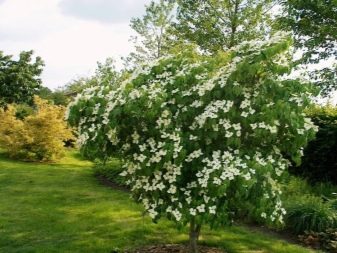
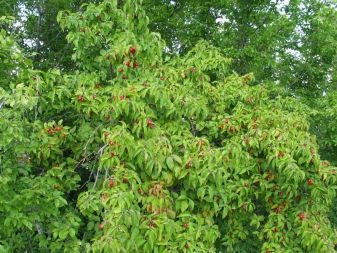
Landing rules
Derain is not too picky about planting, so gardeners, even beginners, do not face problems. You can plant shoots both in well-lit and slightly darkened areas. It should be taken into account that variegated varieties with a large amount of shade during the day can lose their amazing color.
Any of the selected varieties of deren quickly adapts to the created conditions, this is another advantage of the plant. There are only a few varieties that are not very hardy, so they will need to be covered while they are young. As for watering, the plant can withstand a prolonged absence of rain, but there are also varieties in which the root system is on top, they need to be watered more often.
As for the soil, it is better if it is a moisture-consuming type, although such a shrub grows well on a soil depleted in organic matter, since a large root system extracts the necessary nutrients from deeper layers.
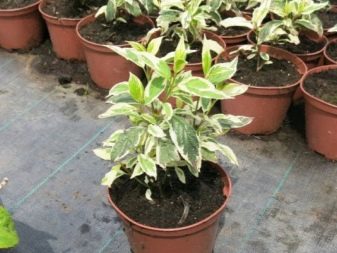
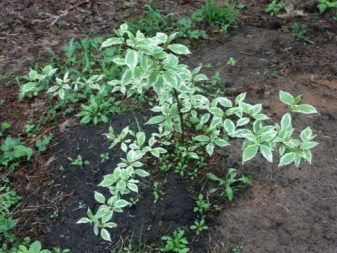
It is very good if the gardener is not lazy and regularly starts feeding the plant. The dogwood will quickly respond to such care and attention with dense vegetation and a large number of fruits. The most successful planting is considered in soil with a low pH.
But the lawn does not like frequent interference around the plant in the soil, since its root system suffers from this. This is one of the reasons why it is not worth ripping too often.
Before planting, the pit should be prepared in advance. If you plan to plant several plants next to each other, then the distance should be at least 700 mm. If this is a young shrub, then the depth of the pit is up to 500 mm. The root collar must be deepened by 3 centimeters. If planting is done on loamy soil, then you will need to additionally pour compost, fertilizer or humus inside the pit. You can use a mixture of peat and sand.
The ideal combination is considered to be 2 parts of compost and sod land and 1 each of sand and peat. From fertilizers, you can add 100 grams of dolomite flour, superphosphate or wood ash. If the soil is peat, then the amount of dolomite flour should be doubled.
After the seedling is laid in the ground and covered with earth, you will need to tamp the soil around a little. In the area where the root system is located, there should be no voids; in order to remove them, the plant is watered.
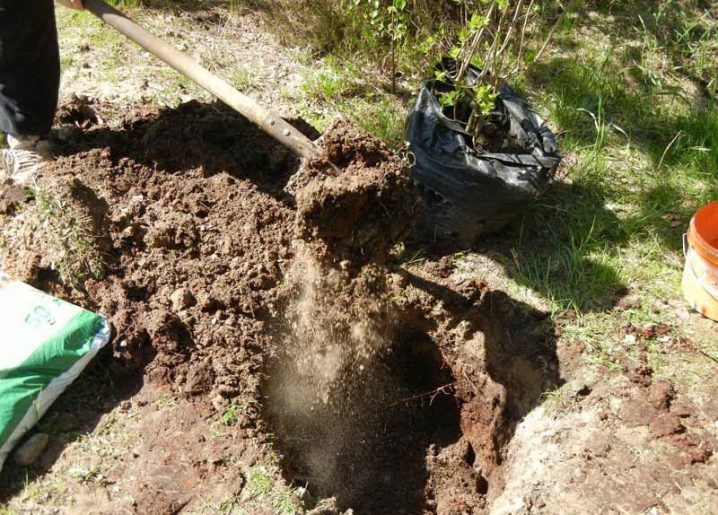
It is worth saying that dense tree plantations help protect the site from dust and unnecessary noise. This green hedge looks very attractive. To outline the boundaries of the future fence, it is worth using twine.
It is best used for planting bushes up to five years old, which are supplied in containers. The main thing is not to disturb the root system; for this, the grass is removed from the package very carefully and, with the available soil, is immersed in the planting pit. Every gardener must remember that despite the fact that the dogwood is picky, it will hurt if the depth of the pit is insufficient. It is impossible for the root system to even partially bare.
The best time for planting seedlings is early spring. During the warm months, the bush will have time to adapt and prepare for the subsequent wintering. Before you immerse the seedling in the hole, you need to trim its roots a little.
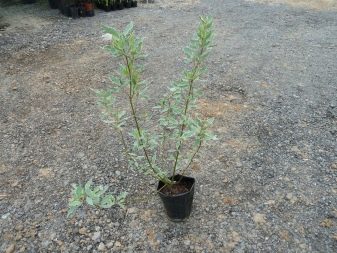
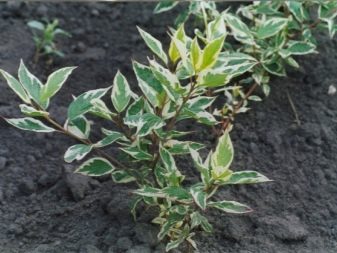
Breeding features
It can be propagated in the open field both by cuttings and by germinating seeds. If we talk about the natural growth of a plant, then in nature, seedlings are formed every year. If you need a large amount of planting material next year, you can organize a separate bed, which will begin to sprout after winter. Only a year later, young seedlings can be transplanted to a permanent place for their further growth.
You can also grow this tree in the form of a trunk or propagate by shoots, that is, cuttings. Shoots are cut at the beginning of summer, but it must necessarily be already stiff branches.
The landing site is a greenhouse or greenhouse. By the fall, a young plant should have a good root system. Such seedlings are stored in the sand, in a basement or a greenhouse, and in the spring they are planted.

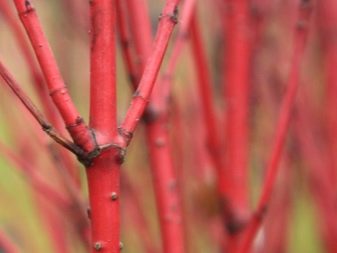
Subtleties of care
Derain doesn't need pruning to help shape the crop. While the plant is still young, this care has a purely aesthetic function, so that a tree with a tall stem can be created. After that, sanitary pruning is carried out in the fall. The main task with proper turf cultivation is to remove old and damaged branches, make the crown not so dense, remove extra small shoots that only spoil the appearance.
After 20 years, rejuvenating pruning is required, which allows you to remove old branches and allows young shoots to develop. Regardless of why it was necessary to remove part of the crown, this should be done only before the start of sap flow.
In winter, preparation for spring begins, only a few varieties that are unstable to cold need to be covered.
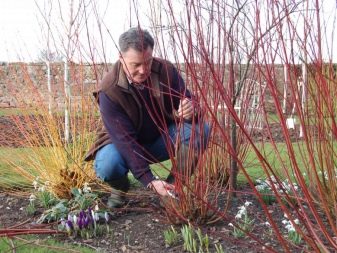
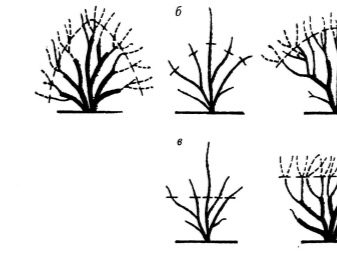
As for other care, this plant loves moisture and grows great when there is enough of it. Regular watering is the main task of the gardener, especially for young bushes.
Watering is done in the evening, the soil around should be moistened at least 50 centimeters in depth. The lack of moisture is clearly visible in the elasticity of the leaves. You can make a hole around and completely fill it with water, one plant takes up to 60 liters of liquid. To preserve moisture, the wet soil is sprinkled with mulch.
The plant must be fed throughout the year. Urea and potassium sulfur are used for this, 10 grams or 20 grams of superphosphate per bush. Complex fertilizers are applied in late spring or early summer.
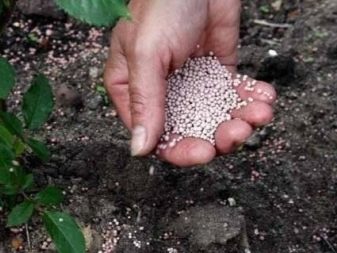
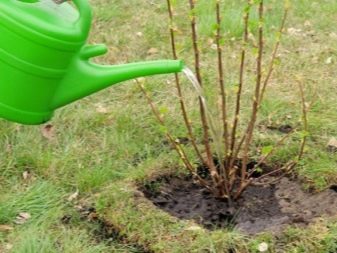
Diseases and pests
Derain, which grows naturally, is often affected by viruses and fungi, including:
- powdery mildew;
- leaf mosaic;
- white spot.
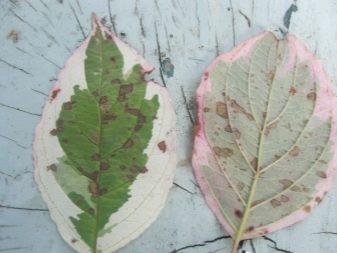
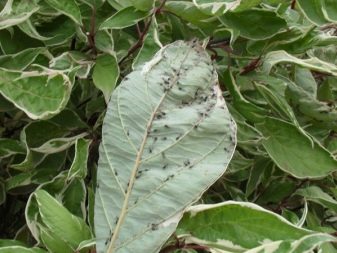
This plant and some pests, including moth and warty sawfly, do not leave alone. If we talk about the varieties that were bred, then they are practically not susceptible to the negative influence of fungi and insects. If this plant is sick, then this happens very rarely, the most frequent phenomenon is the appearance of aphids on young bushes, which feeds on plant juices in spring, and flies to the grass when the heat comes. The best remedy is an insecticide, which is diluted in a proportion of 15 mm per 10 liters of liquid:
- Actellika;
- "Confidor".
You can use 2 ml of "Aktara" for the same amount of liquid. Spraying is carried out only in dry time, it is desirable that there is no rain for several days.

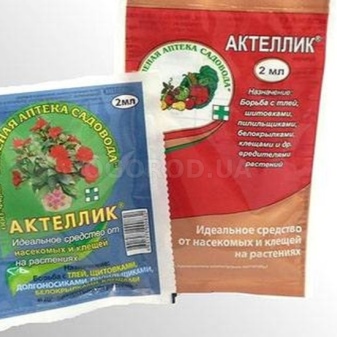
Application in landscape design
Due to its delightful coloration, most varieties of deren are used in landscaping. They can decorate the yard, make a hedge. In spring, such plantations delight with abundant flowering, and in autumn and winter - with a variegated color, which is in perfect harmony with white snow.
Even in cloudy weather, the dogwood is able to improve the mood and create a sense of celebration around itself. The most commonly used three-meter "Albomarginata", "Variegata" and "Shpeta".
You can use such a decoration instead of flower beds, on which flowering is maintained infrequently, or combine plants with other plantings, which begin to dazzle in autumn.
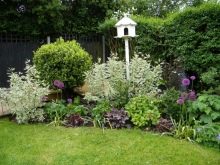

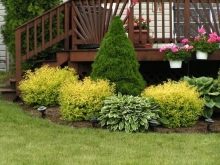
See the next video for how to use and care for grass in your gardens.

































































The comment was sent successfully.